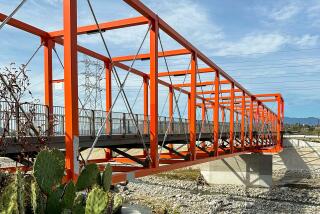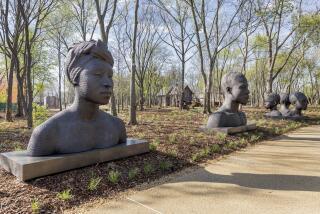A healthy dose of American history
Paul Revere was captured on April 18, 1775, before he could warn the residents of Concord, Mass., that the British were coming. (He did make it to Lexington, Mass.)
No Revolutionary War battle was ever fought at Valley Forge, Pa., even though Gen. George Washington and his troops were there for nine months, including during a horrific winter.
Gustave Eiffel — he of tower fame — gave our Statue of Liberty her backbone.
In Boston, Philadelphia and New York last spring, I exercised my way through decades of U.S. history that I never seemed to have learned in school. Maybe all the movement activated my brain and made me more receptive as I walked, biked and kayaked my way through these lessons. As my knowledge increased, my weight decreased by about 3 pounds. Does it get any better than that?
Boston
During four days in Boston, by kayak and by foot, I got the skinny on a diverse range of topics, from canoe courtship to Revere’s incomplete ride.
Paddling a two-person kayak with Daniel Smith from Charles River Canoe & Kayak, I learned that in the 1890s unchaperoned couples could court in a canoe, but if they were caught kissing, they would be deemed “not in control of their vessel” and could be fined. We paddled round trip from Kendall Square in Cambridge across the Charles River and around the Esplanade park. As I took in the skyline and attempted to do at least 30% of the paddling (with several short breaks), Smith pointed out the Massachusetts Institute of Technology, the Museum of Science and the back of the Boston Pops Hatch band shell that I’d known only from televised Fourth of July concerts.
Boston is a walking kind of town (I averaged 20,000 steps a day, or about five miles with my stride), so the next day, I accompanied a patriot guide from the Freedom Trail Foundation on two walking tours along the 21/2-mile Freedom Trail.
The guide was dressed as William Dawes, who helped Revere spread the alarm that famous April night. It’s said that the statue of Revere on horseback doesn’t face the Old North Church, where the one-if-by-land-two-if-by-sea lanterns were hung, because the parishioners of St. Stephen’s Catholic Church (at 401 Hanover St.) didn’t want a horse’s behind facing their church. Revere allegedly cast the bell in St. Stephen’s, which began life as a Congregational church but became St. Stephen’s in 1862. It was the family church of Rose Fitzgerald Kennedy, the matriarch of the Kennedy clan. Her funeral was here in 1995.
On a Freedom Trail historic pub crawl (a crawl counts as exercise, I told myself) that evening, we borrowed a toast attributed, probably incorrectly, to Ben Franklin: “Beer is proof that God loves us and wants us to be happy.” So I exercised my elbow and raised my glass to Ben.
The next day, a short train ride from Boston took me to Concord. Here, Sue Merlino of Concord Bike Tours and I pedaled four miles through Minute Man National Historical Park (which encompasses the battle road from Concord to Lexington on which British regulars and American militia and Minutemen fought in 1775) from the North Bridge to Paul Revere’s capture site in Lincoln, Mass., just outside of Concord. We also stopped at the Concord house of Dr. Samuel Prescott, who joined Dawes and Revere on their ride. Revere was captured, and Dawes fell off his horse, which ended his evening. Prescott was the only one who made it all the way to Concord.
I wrapped up my visit to Boston with a guided bike ride to and a walking tour of Fenway Park, home of the Boston Red Sox. Fenway, which opened in 1912, is the oldest ballpark still in use the U.S., followed by Chicago’s Wrigley Field, which opened in 1914.
Philadelphia
If Boston was the cradle of liberty, Philadelphia was the nursery. The Declaration of Independence, the Constitution and the Liberty Bell were born here, and Valley Forge is but 20 miles away.
I biked 6.6 miles along the rolling hills of Valley Forge National Historical Park, which boasts more than 3,500 acres of opportunities to picnic, fly kites and bird watch, and even, when it snows, cross-country ski. Park rangers guide tours, and reenactors interpret how soldiers and the families who followed them lived. Martha Washington, who could have lived comfortably at Mount Vernon, chose to join George at Valley Forge.
I saw no trace of the miserable encampment of the winter of 1777-78. Instead, I discovered a tree-lined Eden for birders, bicyclists and dog walkers. No such leisure, of course, for the soldiers who, under the tutelage of Baron Friedrich Wilhelm Augustus von Steuben, a Prussian soldier, became the well-trained Continental Army. Von Steuben wrote “regulations for the order and discipline of the troops of the United States.” His transformation of Washington’s ragtag militia helped the new country prevail in the 81/2 -year-long Revolutionary War.
Back in Philadelphia that evening in Old City, I joined the “Independence After Hours” tour, which includes dinner and an evening visit to Independence Hall. The setting and the Colonial characters who joined us transported me to July 1776. It was more entertainment than exercise, but nothing beats chatting with Benjamin Franklin over a meat pie at City Tavern, founded in 1773 and where Franklin, Washington and Thomas Jefferson once dined. I walked a mile back to my hotel to make up for my slacker evening.
About 21/2 miles from Independence Hall are the ruins of Eastern State Penitentiary, which emphasized repentance, and I wandered there the next day. Although it was designed for criminals to repent in solitary confinement, the penitentiary had its perks. Inmates had flushing toilets before President Andrew Jackson had them in the White House. (He didn’t learn the pleasures of the flush toilet until 1829.) On my walk back to the hotel, I jogged up the 72 “Rocky” stone stairs outside the Philadelphia Museum of Art (about five blocks from the prison) and watched other tourists experience their own “Rocky” moments.
The next morning, I kayaked two miles on the Schuylkill River — which links the western edge of the city center with the Philadelphia Museum of Art — to see the Water Works that supplied Philadelphia with clean drinking water from the 1800s through the early 1900s. Later I walked to the Liberty Bell Center in Old City. I’d been preceded by some prestigious company: Nelson Mandela came here July 4, 1993, to accept the Liberty Medal, and the Dalai Lama visited in the fall of 1990.
The bronze statues in Signers’ Hall at the National Constitution Center in Independence Mall in Old City are so lifelike that I found myself chatting (softly) with Washington, James Madison and Franklin. The statue designers researched each delegate’s height, facial features and clothes to ensure that these bronze men were realistic from brow to britches.
New York
I eagerly anticipated climbing the Statue of Liberty’s stairs, rowing a boat in Central Park, taking a fencing lesson and playing ping-pong during my time in the Big Apple, despite some residual physical effects of my time in Boston and Philadelphia.
Only 240 crown-access tickets for the Statue of Liberty (I had ordered mine online about 10 weeks before my trip.) are issued per day, so I would be climbing her 354 stairs rain or shine. I got rain, which limited the view but not the fun. My crown-access group’s ages ranged from 7 to 60, and we climbed nonstop to her crown in 15 minutes. I got a bit winded but attempted to pant sotto voce.
Eiffel designed the tower inside Lady Liberty to hold up her 62,000-pound, 3/32-inch-thick copper skin, one of the exhibits said. She arrived in America four years before Eiffel’s other crowning achievement, Paris’ Eiffel Tower, which opened the World Exhibition of 1889 in the City of Light.
I ended the day with a group fencing lesson at the New Amsterdam Fencing Academy (2726 Broadway between 104th and 105th streets). I had taken fencing as a theater major in college and loved it, so the chance to take three introductory lessons for $30 seemed a bargain even though I had time for only one lesson. I learned that a foil, an epee and a saber are the three fencing weapons, and my thighs discovered that this sport is far more physically demanding than climbing 354 stairs.
The next morning in Central Park, America’s first public landscaped park, I discovered that I’m better at paddling a kayak than rowing a boat, but rowing provided a unique view of Central Park, which opened in 1857 but wasn’t completed until 1873.
That evening a childhood passion was reignited when I played ping-pong at Spin, a 13,000-square-foot Flatiron District table-tennis club near Madison Square Garden. You don’t have to be a member to play. Playing ping-pong is like riding a bike; once you’ve learned how, it comes back to you, even if it’s been years. Celebrity table tennis pro Wally Green showed me how he plays ping-pong using his BlackBerry as his paddle. I had so much fun I would have stayed all night if it hadn’t been for back-to-back walking tours scheduled the next day.
Swollen feet and knees aside, I trudged around Revolutionary New York with Big Onion Walking tours the next morning and saw where Washington took his first presidential oath of office at Federal Hall on Wall Street. By the end of the tour I was more than dragging. I wasn’t sure whether I was feeling the effects of overdoing it or was having a heart attack, so playing it safe, I went to the emergency room at New York University. While I waited, I realized 50 may not actually be the new 30.
Diagnosis: Too much of a good thing is too much of a good thing. My heart was fine, but I left with a prescription for Tagamet and instructions to take it easy.
So I canceled one planned walk on Saturday to ensure I could handle the Bike the Big Apple’s Tour C: The Sensational Park and Soul Tour on Sunday that mixes Central Park and Harlem history with a stop at a gospel service.
During our leisurely five-hour, 14-mile ride, which took us round trip from Central Park through Harlem and back to the park near Strawberry Fields (the John Lennon memorial), tour guide Jesse McDonough shared the story of two pack rat brothers who lived in a Victorian mansion in Harlem. Collyer Brothers Park was named for the two recluses, who died in their own clutter in 1947. Homer, blind and disabled by arthritis, starved to death after Langley was killed by a booby trap he set to protect their privacy. After searching 19 days and removing 103 tons of debris, authorities found Langley’s body. They also found newspapers stacked floor to ceiling, specimen jars with human organs, broken pianos, guns, toy trains and the chassis of a Model T. (Note to self: Clean house, pronto.)
Our group stopped at East Mt. Olive Baptist Church on 128th Street. Because my attention tends to wander, I loved dropping in for just the music part of a gospel service. We spent about 30 minutes swaying and clapping our hands, then made a small contribution to the church offering before departing.
It was good for the soul. In fact, the whole trip was (with the possible exception of the trip to the emergency room). I absorbed American history by being physically active. And anytime I lose rather than gain weight on vacation is fantastic. Usually the only thing that’s lighter when I get home is my wallet.
More to Read
Sign up for The Wild
We’ll help you find the best places to hike, bike and run, as well as the perfect silent spots for meditation and yoga.
You may occasionally receive promotional content from the Los Angeles Times.






